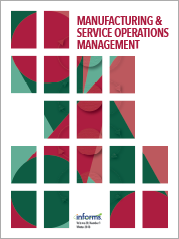Academic articles
Practitioner articles
Working papers
Books
Book chapters
Case studies
Other publications
Subject(s)
Human resources management/organizational behavior
Keyword(s)
career reinvention, career investments, career divestments
Secondary Title
Understanding careers around the globe: Stories and sourcebook
Pages
56–63
ISBN
978 1 03530 840 8
Subject(s)
Economics, politics and business environment; Ethics and social responsibility; Finance, accounting and corporate governance
Keyword(s)
green finance; ESG goals; climate policy
Volume
74
Journal Pages
1–19
ISSN (Online)
2366-035X
Subject(s)
Economics, politics and business environment
Keyword(s)
internal labor markets, organization of labor, wage setting
JEL Code(s)
J31, J62, M5
This paper develops a new method to study how workers’ career and wage profiles are shaped by internal labor markets (ILM) and job hierarchies in firms. We tackle the conceptual challenge of organizing jobs within firms into hierarchy levels by proposing a data-driven ranking method based on observed worker flows between occupations within firms. We apply our method to linked employer–employee data from Norway that record fine-grained occupational codes and track contract changes within firms. Our findings confirm existing evidence that is primarily based on case studies for single firms. We expand on this by documenting substantial heterogeneity in the structure and hierarchy of ILMs across a broad range of large firms. Our findings on wage and promotion dynamics in ILMs are consistent with models of careers in organizations.
Volume
233
Journal Pages
661–688
Subject(s)
Economics, politics and business environment; Strategy and general management; Technology, R&D management
Keyword(s)
bundling, tying, competition, innovation, cloud computing
JEL Code(s)
K21, L12, L41
Pages
6
Journal Pages
211–216
Subject(s)
Marketing; Strategy and general management; Technology, R&D management
Keyword(s)
solid growth, strategic challenges, strategic options for corporate development, advanced premium goods, no-frills, complex service solutions, global industrial companies, global markets, innovative business models, corporate structures in times of deglobalization, hidden champions
ISBN
978-981-126-451-1
ISBN (Online)
978-981-126-453-5
Subject(s)
Human resources management/organizational behavior
Keyword(s)
dyadic knowledge transfer, ERGM, mental model, (mis)alignment, perceptions
Secondary Title
Understanding workplace relationships: An examination of the antecedents and outcomes
Edition
1st ed.,
ISBN
9783031166396
Subject(s)
Human resources management/organizational behavior
Keyword(s)
dyadic knowledge transfer, ERGM, mental model, (mis)alignment, perceptions
Secondary Title
Understanding workplace relationships: An examination of the antecedents and outcomes
Edition
1st ed.,
ISBN
9783031166396
Subject(s)
Human resources management/organizational behavior; Strategy and general management
Secondary Title
Understanding workplace relationships: An examination of the antecedents and outcomes
Edition
1st ed.,
ISBN
9783031166396
Subject(s)
Management sciences, decision sciences and quantitative methods
Keyword(s)
Service operations, rational inattention, strategic customers, rational queueing, information costs, system throughput, social welfare
Problem description: Classical models of queueing systems with rational and strategic customers assume queues to be either fully visible or invisible while service parameters are known with certainty. In practice, however, people only have “partial information” on the service environment in the sense that they are not able to fully discern prevalent uncertainties. This is because assessing possible delays and rewards is costly as it requires time, attention, and cognitive capacity which are all limited. On the other hand, people are also adaptive and endogenously respond to information frictions. Methodology: We develop an equilibrium model for a single-server queueing system with customers having limited attention. Following the theory of rational inattention, we assume that customers optimize their learning strategies by deciding the type and amount of information to acquire and act accordingly while internalizing the associated costs. Results: We establish the existence and uniqueness of a customer equilibrium and delineate the impact of service characteristics and information costs. We numerically show that when customers allocate their attention to learn uncertain queue length, limited attention of customers improves throughput in a congested system that customers value reasonably highly, while it can be detrimental for less popular services that customers deem rather unrewarding. This is also reflected in social welfare if the firm's profit margin is high enough, although customer welfare always suffers from information costs. Managerial implications: Our results shed light on optimal information provision and physical design strategies of service firms and social planners by identifying service settings where they should be most cautious for customers' limited attention. Academic/practical relevance: We propose a microfounded framework for strategic customer behavior in queues that links beliefs, rewards, and information costs. It offers a holistic perspective on the impact of information prevalence (and information frictions) on operational performance and can be extended to analyze richer customer behavior and complex queue structures, rendering it a valuable tool for service design.
© 2021 INFORMS
Volume
25
Journal Pages
266–287
ISSN (Online)
1526–5498
ISSN (Print)
1523-4614
Subject(s)
Economics, politics and business environment; Information technology and systems
Keyword(s)
digital government, cyber risk, cyber crisis management, network governance, resilience, electronic identity, estonia
Volume
40
Journal Pages
101781

